I'm trying to build an Angular 2 page on top of a Spring Boot API. I have configured CORS (correctly I believe), but I am getting blocked by Spring Security's CSRF protection.
It is my understanding that Angular 2 handles CSRF automatically as of RC2, and I am on RC4. The server is sending an XSRF token in response to a POST from the Client as seen here:
I assume that Angular 2 is not picking it up? I know that CORS is working because when I put .ignoringAntMatchers("/urlhere/") on the end of .csrf() to test, the request went through, so CORS is not blocking it. Here is my config method for HttpSecurity:
@Override
protected void configure(HttpSecurity http) throws Exception {
http
.authorizeRequests()
.antMatchers("/auth/**", "/signup/**").permitAll()
.and()
.headers()
.and()
.exceptionHandling()
.and()
.cors()
.and()
.csrf()
.csrfTokenRepository(CookieCsrfTokenRepository.withHttpOnlyFalse());
}
My Login process on client side consists of a method that first sends credentials, then uses a JWT token to retrieve credentials. The two methods are as follows:
sendCredentials(model) {
let tokenUrl = 'http://localhost:8080/user/login';
let headers1 = new Headers({'Content-Type': 'application/json'});
return this.http.post(tokenUrl, JSON.stringify(model), {headers: headers1});
}
sendToken(token){
let userUrl = 'http://localhost:8080/rest/user/users';
let headers2 = new Headers({'Authorization': 'Bearer '+token});
return this.http.get(userUrl, {headers:headers2});
}
What am I missing to satisfy the requirements for CSRF protection? Is it client side? Or am I needing to add /login/ to my list of antMatchers?
